
From Hughenden: No 3 in an outback adventure series
So we’re driving into Longreach from Barcaldine, a journey rarely punctuated by a bend in the road, when snippets of a song jump into my head.
“I dunno why they call it Longreach, it doesn’t seem that far to me,” goes the line from one of Mick O’Halloran’s songs. .
Unlike much of the outback, at least you know when you’re coming into Longreach, 1,175 kms north-west of Brisbane, because of the unmistakable landmark which is the Qantas Founders’ Museum. We found our way to the town information centre and paid $6 for the privilege of camping for two nights at Apex Park, 4 kms west. The photo doesn’t quite do justice to the sight of 90 or so caravans, fifth-wheelers, slide-ons, camper trailers, A-vans, converted buses and the occasional tent, squatting in the dust alongside the Thompson River.
There’s a barbecue and covered picnic tables, flushing toilets and it’s only five minutes from town. But we were all a bit too close together for comfort and there were irritants like drifting smoke from camp fires, the grumble of generators, the untimely crowing of feral roosters and the bloody flies! I’ve been on a quest for a pair of his and hers fly swatters but so far on this trip they’ve been out of stock everywhere we looked.
I could not help noticing how many more vans there were in the morning, implying that some arrived late (or early), as it the habit of the lesser crested grey nomad, nabbing the best sites. I’m not suggesting they do it to avoid paying $3 – nobody’s that much of a tight arse.
Apex Park is reached via the Landsborough Highway west of Longreach across a series of bridges forming a long causeway across the Thompson River flood plain. The Thompson is a 3,500km long inland river that runs across channel country into Lake Eyre. While Longreach, like other western Queensland towns, has relatively low rainfall (average 450mm a year) floods are common because the many tributaries of the Thompson join and spread during heavy rain. The causeway’s 16 interlinked bridges stretch 24 kms across the flood plain, one effort to minimise flooding in the town.
We drove to the other side of Longreach for a late afternoon walk through Iningai Nature Reserve. Named after the traditional owners, this example of Mitchell Grass Downs country along the Thompson River has been allowed to regenerate since goats left it a dusty desert in 1950. There’s a fine example of a Coolibah tree, under which one can pose for the inevitable photo. The reserve is touted as a bird watcher’s paradise but we didn’t see many, maybe because night was gathering fast. Tip for bushwalkers – always carry a torch.
Onwards to the town seeking to claim the crown of South Australia’s Quorn as the country’s best known outdoor sound stage. Major films like Mystery Road and Goldstone were filmed in the Winton district. We were in Winton primarily to enjoy the Outback Film Festival, established in 2013 after the successful premiere of the aforementioned Mystery Road, starring Aaron Pedersen as a surly black cowboy detective. Some 400 people packed in to Winton’s famous open air theatre for the event, which remains the main venue for the film festival. Some films are also shown in a theatre at Winton’s rebuilt Waltzing Matilda Centre.
We saw some great films in the four days we were in Winton including Mystery Road, Sweet Country, Brothers’ Nest (starring Shane and Clayton Nicholson), documentaries (Night Parrot, Black Panther Woman and Backtrack Boys stand out), and a gory sci-fi film, Upgrade, which was a last minute replacement for That’s not my Dog.
If you get bored with the show you just look up, let your eyes adjust and take in nature’s starry, starry night. When Upgrade finished about 10.20 we were heading to bed but noticed that comedian Lawrence Mooney was doing an R18 late show at the North Gregory Hotel. Mooney came out in character as PM Malcolm Turnbull and wasted no time establishing the tone with a few swear words.
“Are there any kids here?” he asked. “If there are, f*** them off because this is an adults-only show.”
Mooney’s sharp satirical sword spared no-one; Millennials and Gen Xers copped it, so too the Greens, Labor and a few Senators singled out for special mention. Two people walked out when he made a joke about farmers and suicide and one heckler in the front row kept up such a running commentary Mooney resorted to telling her to shut the f*** up. You attend late night comedy shows at your own risk.
Grey nomads also copped a spray, although they were so under-represented in the Monday night audience there was little risk someone would take offence at his suggestion that serial killers should stop preying on backpackers and focus on grey nomads instead “because nobody cares”.
The telling part near the end of his show was Mooney asking the audience of 30-40 people how many actually lived in Winton. One woman raised her hand only to say she used to live in Winton but had moved away.
I had vague ambitions about driving out to Middleton, where Mystery Road was shot, until I figured out it was a 360km round-trip. Every place of interest around here is at least two hours’ drive away.
The Outback Film Festival, A Vision Splendid, is a bold project for a small outback community to sustain. It deserves to be supported (and you can still find time to go fossicking or dinosaur spotting).
On Wednesday night we got glammed up and went to the 100th Anniversary celebrations of the Royal Open Air Theatre, which included dinner and a special screening of the silent film classic, The Sentimental Bloke.
It meant skipping the spectacular sunsets you so often see in the flat country spreading west, but there are sure to be more as we head north to Hughenden and the Gulf country.
The alert among you will observe that this was posted on Thursday, as we’re going bush and will be out of WIFI range for a few days. I’m off to buy some block ice as our caravan fridge decided to cark it (Aussie expression meaning it died). After our visits to the Stockman’s Hall of Fame in Longreach and Barcaldine’s Australian Heritage Centre, which tell stories of the hard life of country people in the 1800s, getting by without a fridge for a few weeks is no great hardship (as long as you don’t forget to buy the ice-Ed.)

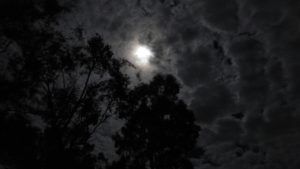
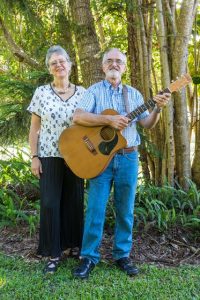



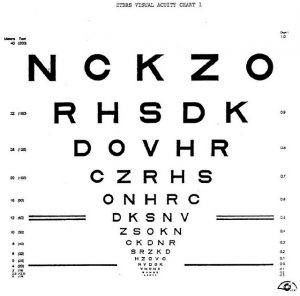
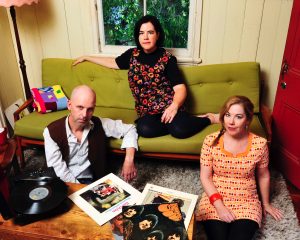
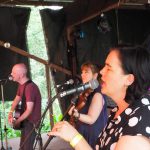 Tin Star has been working on original songs for a debut album while performing at festivals including Wintermoon (NQ), Turning Wave (Yass), Music by the Sea and the West End Sessions. Last year the trio performed at the Neurum Creek and Maleny music festivals.
Tin Star has been working on original songs for a debut album while performing at festivals including Wintermoon (NQ), Turning Wave (Yass), Music by the Sea and the West End Sessions. Last year the trio performed at the Neurum Creek and Maleny music festivals.